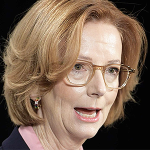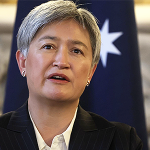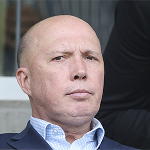Immigration has finally become a topic of genuine debate in Canada, and that is a remarkable and sorely needed development in our discourse. This follows decades of it being an issue that political parties could only support while being permitted to argue about the nuances, lest they be accused of bigotry and xenophobia.
Amidst a brutal affordability crisis, three-quarters of Canadians want immigration levels lowered until that situation is at-least partially alleviated. Given the dismal number of housing starts in Canada, that will mean drastic reductions.
This is far from the only reason Canadians have become sceptical about immigration.
No policy issue should ever be above debate, least of all immigration and its economic benefits, as well as its social changes.
Under the government of Prime Minister Justin Trudeau, whose Liberal party has held power since 2015, the number of immigrants coming into Canada has exploded. What was sold to Canadians as a noble, hopeful policy that would only be good for the economy has become an utter disaster.
Pierre Poilievre, leader of the Conservative Party, has pledged to lower immigration to the point that the annual growth of Canada’s housing stock outpaces the number of newcomers. If that sounds like an obvious policy any reasonable government should have already implemented, that’s because it is.
It is no surprise that, as the loudest voice opposing just about everything the Liberals stand for, Poilievre and the Conservatives are surging in the polls and projected to win a supermajority in the 2025 election. He is not on track to do so because he is an anti-immigrant demagogue, but because he is promising a return to sanity on immigration and a host of other policy issues.
The problem is that the Liberal government is not level-headed or pragmatic. Since forming a government nearly a decade ago, Trudeau and his ministers have ambitiously swung for the fences on as many issues as possible to bake left-wing ideas into Canada’s culture and economy.
During his successful election campaign in 2015, Trudeau promised Canadians ‘real change’, and he was not lying. One of those changes was dramatically expanding immigration, and another was pushing a post-nationalist agenda.
For those who do not know, post-nationalism in Canada means the country has no established mainstream culture or identity, which is how Trudeau himself described it in 2015. It was an ideology espoused by Life of Pi author Yann Martel, who labelled Canada as ‘the greatest hotel on Earth’.
Canada is not akin to a hotel, and it never has been. It is a country with an Anglo-American culture, distinguished by a unique history and its own set of beloved peculiarities. Even if Canada were a hotel, it would be terribly overbooked, as insulting as Martel’s comparison is.
Between January 1 and August 31, 2023, 692,760 temporary work permits were issued, compared to 274,690 in the same time period in 2022. Canada’s population now grows at a rate of over 3 per cent annually, rather than 1 per cent as it was for decades.
International student permits jumped from 354,784 in 2018 to 550,187 in 2022. In 2023, there were over a million such students present in Canada, mostly concentrated in the larger cities. Bear in mind, Canada is a country of less than 40 million people.
For international students, Canada offers the possibility of converting their student visas to work visas, with the hope of then converting those work visas into permanent residency permits.
A diploma mill boom industry emerged, with predatory entrepreneurs starting up ‘career colleges’, often located in rundown storefronts in shopping plazas and offering little more than a promise of eventual permanent residency. This was especially acute in the province of Ontario, which has very loose regulations on starting up educational institutions.
Meanwhile, established post-secondary schools with good reputations like Conestoga College in Toronto or Cape Breton University in Nova Scotia have seen the vast majority of their enrolments become international students. In Ontario’s case, the nominally centre-right provincial government froze university tuition fees in 2019, and many institutions opted to soak themselves on hefty international student fees.
There have been tremendous consequences for this open-door policy, which has become rampant with fraud as newcomers try to game the system for permanent resident permits.
The effects of such a policy of mass immigration have included an exacerbation of Canada’s housing crisis, which the federal government was warned about when they began ballooning Canada’s population.
For a government that pretends to follow the ‘evidence’, they shelved the warnings of their own public servants in favour of taking marching orders from the Century Initiative. The Century Initiative is a lobby group formed by ex-McKinsey employees and has petitioned the Canadian government to try and increase its population to 100 million by 2100.
One question that many Canadians are asking is, why? Why should Canada strive for such an arbitrary target? The evidence that it would be a good thing does not speak for itself.
One of the great myths pushed about mass immigration is that it is always good for economic growth, but Canada’s GDP per capita on the whole has declined for six years in a row. In 2023, GDP per capita in the United States was 43 per cent higher than in Canada, and now in 2024, economist Trevor Tombe estimates that gap could widen to 50 per cent.
In 2015, Canada’s standard of living was ranked ninth on the UN Human Development Index (HDI). By 2022, Canada’s ranking in the UN HDI had plummeted to 18th.
Housing is an economic issue that has gone off the rails due to the massive influx of newcomers, straining the already thin housing supply in both Canada’s major cities and smaller urban centres.
A house on the American side of Niagara Falls goes for $145,000 USD, while on the Canadian side it is $513,110 USD. Few, save for the wealthy, those who come from well-off families, or foreign investors, can afford to purchase property, to say nothing of monthly rental costs.
The monthly rent for a one-bedroom apartment in Toronto jumped 40 per cent between 2021 and 2023, now amounting to about $1,860 USD. Newly common are ramshackle houses hosting illegal numbers of international students per room, as slumlords make the most of their rare, valuable properties.
Canada’s housing supply has not kept up with the massive influx of immigration as a result of the sheer numbers and layers of regulations that stifle new builds. Whatever evidence the Liberals used to justify their immigration policy did not include supply and demand when it came to housing.
Unlike American states like Texas, which have few housing regulations, cities in provinces like BC still have some of the most onerous homebuilding fees in Canada.
In infamously unaffordable Vancouver, for example, extra fees paid to the municipal government account for 30 per cent of the costs of building a new home, which go for an average of $881,507 USD in a city where the average yearly salary is $45,816 USD. Unaffordability has dampened the spirit of young people, just half of whom believe they will ever own property and get the security that comes with it.
All of this has been accompanied by the spread of post-nationalism under the guise of ‘inclusion’ and ‘diversity’, which has amounted to little else than scrubbing away anything reminiscent of Canada’s colonial past. Canada is a British-style Westminster democracy with King Charles III as head of state, Common Law, and a nominally liberal economy, yet post-nationalists would have all reminders of that erased.
One of the first moves Trudeau made after becoming Prime Minister was to remove portraits of Queen Elizabeth II from government buildings in Ottawa.
The Fort Calgary historic site was renamed The Confluence in an effort to ‘decolonise’ it, which, as one Canadian writer lamented, made the birthplace of the city of Calgary sound like a condominium development.
Likewise, the College of Physicians and Surgeons of British Columbia retired the crest it held since 1886, resplendent with lions and the Crown. What replaced it in the name of ‘decolonisation’ was a bland, corporate-style logo consisting of three shades of blue and little else.
There are calls for provincial flags to be ripped up and replaced because they feature a Union Jack, while Victoria Day, named in honour of the former Queen, is scarcely acknowledged by the Prime Minister or left-wing provincial premiers.
It is little more than Anglophobia stitched up as ‘inclusion’. Canadians are not actually on board with this desecration of the national memory and have opposed the statue topplings and ‘decolonial’ efforts, though the progressive government has not done anything about it.
Another prong of post-nationalism, made possible by boosting immigration to a country whose government tells them contains no identity or history worth integrating into, has been Canada’s transformation into a stage for the old world’s blood feuds.
Jewish institutions have come under attack from anti-Israel activists, including coordinated bomb threats, shots fired at Jewish girls’ schools, and near-daily harassment of the community with calls to ‘globalise the Intifada’. Other conflicts are present too, such as pro-Hong Kong independence activists being violently harassed by pro-Beijing actors in the streets of cities like Vancouver.
An April poll suggested that two-thirds of Canadians believe immigrants should only be allowed to enter the country if they adopt its values, and those do not include brawling in the streets or making bomb threats over conflicts thousands of miles away. The poll also revealed that Canadians are almost evenly split between those who endorse a multicultural mosaic as the model for society, and those who prefer a melting pot where immigrants assimilate.
This is Canada as the ‘hotel of the world’. It is nothing more than a packed state devoid of a unique culture or history it is allowed to take pride in, where ethnic tensions drive the culture. Post-national Canada is also a future in which nobody can afford a home, in part due to an overcharged immigration system that is riddled with fraud, in a further blow to national dignity.
Still, it would be a mistake to say that Canadians have become an anti-immigrant society; they simply want a return to policies similar to the previous Conservative government that tailored immigration to Canada’s economic needs, such as addressing the lack of highly skilled workers.
The Conservative government’s immigration policy was not solely a cold economic calculation either, as there were also generous allowances under the Conservatives for spousal reunification and the admission of genuine refugees. By balancing selective, skills-based immigration with compassionate admissions, Canada had an economically-sound and family-oriented immigration system that looks like the gold standard in hindsight.
Under Trudeau’s mismanagement, however, immigration is nothing short of an embarrassment. Immigration is also now a topic that people in Canada are finally discussing comfortably, including its economic merits and what levels of integration should be demanded of newcomers.
That is a remarkable achievement in itself.
Even if Trudeau never intended it, making immigration controversial will be among the most important pieces of his legacy. Perhaps that is something we can all thank him for, though he will blush to hear it.








